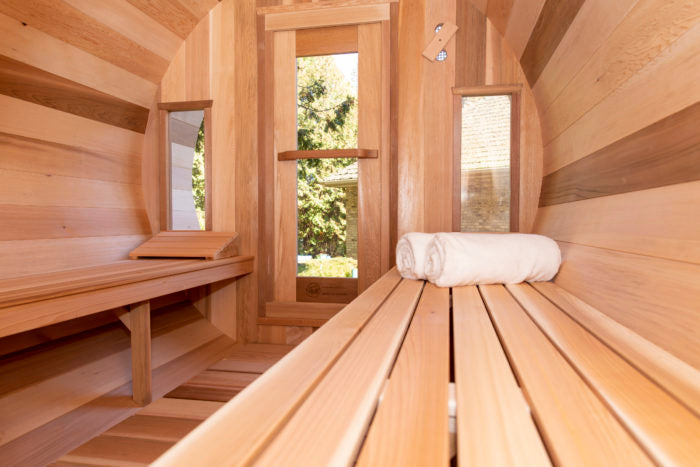Not known Details About Traditional Sauna
Not known Details About Traditional Sauna
Blog Article
Some Known Questions About Traditional Sauna.
Table of ContentsAll About Traditional SaunaTraditional Sauna - The FactsThe Definitive Guide to Traditional SaunaThings about Traditional SaunaFascination About Traditional Sauna
Most of the weight lost in a sauna is water loss and is re-gained upon rehydrating. Nonetheless, certainly sauna can be a vital part of a healthy and balanced weight loss program. To look at the distinctions between traditional and IR saunas, I will separate these right into proven, academic, and made distinctions.Therefore, the most popular point in the saunawhich goes to the ceiling straight above the sauna heateris normally between 185 and 190 F. Claims that a standard sauna exceeds 200 F is just not real and not appropriate for electric saunas sold in the United States. The temperature for a far-infrared sauna is usually established between 120 and 140 F; nevertheless, unlike the conventional sauna, the goal in and IR area is not to attain a heat.
As a result of this, the temperature difference is nearly unnecessary, given that extreme sweating leads to both sauna kinds, however the method of warming the body is different. In an IR sauna the bather will certainly really feel hot and will certainly sweat a lot, but at much reduced temperatures (Traditional Sauna). Therefore, if the objective is to spend longer durations of time in the sauna, the IR sauna is an excellent option
When a standard sauna has been correctly heated, the sauna walls are warm, the air temperature level has accomplished set temperature level and the rocks are super heated. As an interesting side note, the heated walls and the rocks are producing far-infrared warm, incorporated with the heated air, to create an "enveloping heat".
Indicators on Traditional Sauna You Need To Know

When the high temperature is attained, the elements cycle on and off to preserve the heat. Many conventional sauna individuals appreciate putting water over the rocks to develop vapor to elevate sauna humidity degrees. The benefits of pouring water over the rocks consist of: making the room more comfy, moistening the nasal flows, and enabling the use of aromatherapy by mixing necessary oils with the water.

When the energy enters the body, it causes the body temperature to boost and inevitably results in sweat. In an infrared sauna it is very important for the emitters/heaters to stay on nearly continuously. Because there is no mass of rocks to maintain heat, the sauna will cool if the emitters turned off.
As stated above, the sauna bather in an infrared space wants to position himself before running emitters to obtain optimal gain from the warm. The heating time for the 2 spaces can be really different, depending upon exactly how the spaces are used. For a traditional sauna, a bather should permit 30-40 minutes for the room to accomplish a desired temperature level and to properly pre-heat the rocks.
The Greatest Guide To Traditional Sauna
A well built sauna will normally accomplish a temperature level of 150-160 F in concerning 30-40 mins. For hotter temperatures, the area may require to heat for a longer duration.

Standard saunas tend to be bigger (for this reason utilize even more electricity) than infrared saunas, although standard saunas are certainly available in one and two individual dimensions. For a two-person typical sauna, 5x6 or 5x7 dimension is most preferred. The leading bench can conveniently seat two or 3 people and is also enough time to lie down throughout the sauna session.
The Buzz on Traditional Sauna
The typical cost per kWH of electricity in the united state is about $0.11, so a 4.5 kW heating unit will cost roughly $.50 to run for one hour, if the heating unit runs continually for one hour. Normally a sauna heating system will compete 75% of the initial hour and 50% of subsequent hours on given that the components cycle once the established temperature level is achieved.

There is a seldom talked about distinction in the social experience in between the 2 rooms. While our culture has read the full info here shed a few of the social advantage of the standard sauna experience, it can be really socially fulfilling (Traditional Sauna). From check my reference family time in the sauna, to heart-felt discussions with better halves, to sauna partiesthe conventional sauna experience can result in intimate mingling
The Ultimate Guide To Traditional Sauna
Most higher end infrared areas consist of tinted light therapy, sound systems and full-glass fronts.
Report this page